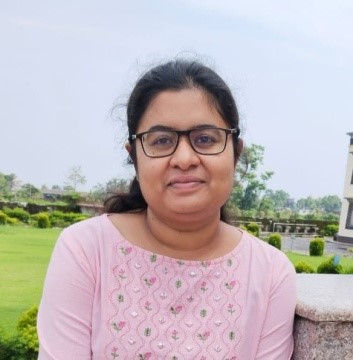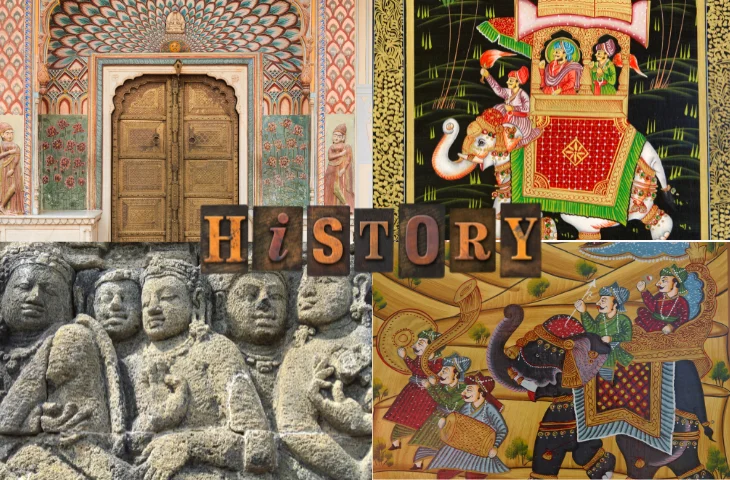Indian History is one of the most important topics in General Awareness and General Studies for competitive exams. It covers ancient, medieval, and modern history of India, including dynasties, important events, freedom movements, and cultural developments. Since history is fact-based and memory-driven, it requires smart learning methods, short notes, and quick recall tricks to answer all questions from this topic.
What Is Indian History in General Awareness/General Studies?
Indian History refers to the study of India’s past, beginning from prehistoric times to modern independence movements.
- It appears in exams because history forms the foundation of India’s culture, politics, and economy.
- Examiners test candidates’ memory, logical association, and ability to connect events with dates, dynasties, or personalities.
- Skills required memorization, chronological arrangement, visualization of timelines, and eliminating incorrect options.
Why Is Indian History Important in Competitive Exams?
Indian History forms a static part of GA/GS and contributes easy-to-score questions. Since most questions are factual, good memorization and practice ensure accuracy.
| Exam | No. of Questions | Difficulty |
| SSC CGL / CHSL | 1–2 | Easy |
| RRB NTPC / Group D | 1 | Easy |
| State PSC / Police | 1–2 | Moderate |
Indian History General Awareness/General Studies Important Topics
Indian History covers multiple timelines and events that are frequently repeated in exams. Below are the quick revision details:
| Concept | Details |
| Indus Valley Civilization | First urban civilization (2600–1900 BCE), known for planned cities like Harappa & Mohenjo-Daro |
| Vedic Period | Age of Vedas (1500–600 BCE), important for religion & society |
| Mauryan Empire | Founded by Chandragupta Maurya, Ashoka promoted Buddhism |
| Gupta Period | Known as the Golden Age of India (4th–6th century CE) |
| Delhi Sultanate | Established in 1206, introduced Persian culture & administration |
| Mughal Empire | 1526–1857, Akbar’s reign marked cultural and economic growth |
| Freedom Struggle | Revolt of 1857, INC formation (1885), Gandhian movements |
| Independence (1947) | End of British rule, Partition of India |
Quick Memorizing Concepts
Using tables to simplify memorization of Indian History concepts helps aspirants get all the information in one go:
| Concept | Details |
| Dynasties Timeline | Learn rulers in order: Maurya – Gupta – Delhi Sultanate – Mughals – British |
| Ashoka’s Policy | Remember “Dhamma = Buddhism + Welfare + Peace” |
| Revolt of 1857 | Mnemonic: “MERATH” (Meerut – Delhi – Kanpur – Lucknow – Jhansi – Gwalior) |
| Governor-Generals | Use timeline chart: Warren Hastings – Cornwallis – Wellesley – Dalhousie – Curzon – Mountbatten |
| Gandhian Movements | Order: Non-Cooperation (1920) – Civil Disobedience (1930) – Quit India (1942) |
| Important Battles | Plassey (1757), Buxar (1764), Panipat (3 major wars) |
What Are the Types of Indian History Questions in General Awareness/General Studies?
Exams usually frame Indian History questions in the following ways:
- Direct: “Who founded the Mauryan Empire?”
- Indirect: “This ruler embraced Buddhism after the Kalinga War. Who was he?”
- Story-based: “The battle that laid the foundation of British rule in India was fought in 1757. Identify it.”
- Mixed-concept: “Which Governor-General introduced Subsidiary Alliance, and in which year?”
Indian History Easy Tips for General Awareness/General Studies
To save time and score better in Indian History, candidates can use:
- Create chronology charts for dynasties and events.
- Remember keywords (e.g., “Plassey = 1757 = Robert Clive vs Siraj-ud-Daula”).
- Use association techniques (connect rulers with their policies).
- Revise previous year questions to identify frequently asked topics.
Indian History Tricks for SSC CGL and Other Exams
Follow these strategies to master Indian History for exams:
- Use flow charts to connect dynasties with years.
- Remember firsts (First Battle of Panipat, First Anglo-Maratha War, etc.).
- Reverse mapping: Recall events by year and then connect to ruler.
- Eliminate out-of-context options (e.g., modern leaders in ancient history questions).
- Group leaders/movements (e.g., Moderates vs Extremists in INC).
Solved Indian History Questions from 2024–25 Exams
- SSC CGL 2024 (Tier 1, Shift 2 – Memory Based)
- Q: Who was the founder of the Gupta Dynasty?
- A: Sri Gupta
- Explanation: He founded it around 3rd century CE; later rulers like Chandragupta I expanded it.
- RRB NTPC 2024 (Shift 1 – Based on Memory)
- Q: In which year was the Battle of Buxar fought?
- A: 1764
- Explanation: British (Hector Munro) defeated combined forces of Mir Qasim, Shuja-ud-Daula, and Shah Alam II.
- SSC CHSL 2025 (Tier 1 – Memory Based)
- Q: Who was the Viceroy during the Quit India Movement?
- A: Lord Linlithgow
- Explanation: He was the Viceroy from 1936–1943; Quit India launched in 1942.
Common Mistakes to Avoid while Solving Indian History Questions
While preparing for Indian History, candidates must avoid these mistakes:
- Ignoring chronology – Dates and order of events are crucial.
- Confusing similar names – Example: Chandragupta Maurya vs Chandragupta I.
- Skipping medieval history – Mughal and Sultanate questions often repeat.
- Over-depending on notes only – Practice mock tests for better recall.
- Not revising PYQs – Previous Year Questions often repeat directly.
FAQs
Use chronology charts and focus on one-liner facts.
They test knowledge by hinting at events or rulers instead of asking directly.
Focus on 1857 revolt, Gandhian movements, INC sessions, and Acts.
Use comparative tables for dynasties and leaders.
Revise short notes, solve previous year papers, and use mock tests.
- OICL AO Notification 2025 Out, 300 Posts, Check Details
- IBPS RRB PO Exam Analysis 2025, 22nd & 23rd November, All Shifts
- Bank Mergers List in India, 1993 to 2025, Latest Updates
- GA Questions Asked in SBI Clerk Mains Exam 2025, 21st November
- SSC CGL टॉप 5 हाई पेइंग जॉब्स कौन-सी हैं?, पूरी जानकारी यहां
- SSC CGL की तैयारी के लिए सबसे अच्छी किताबें कौन-सी हैं? यहां चेक करें

Hi, I’m Aditi. I work as a Content Writer at Oliveboard, where I have been simplifying exam-related content for the past 4 years. I create clear and easy-to-understand guides for JAIIB, CAIIB, and UGC exams. My work includes breaking down notifications, admit cards, and exam updates, as well as preparing study plans and subject-wise strategies.
My goal is to support working professionals in managing their exam preparation alongside a full-time job and to help them achieve career growth.
